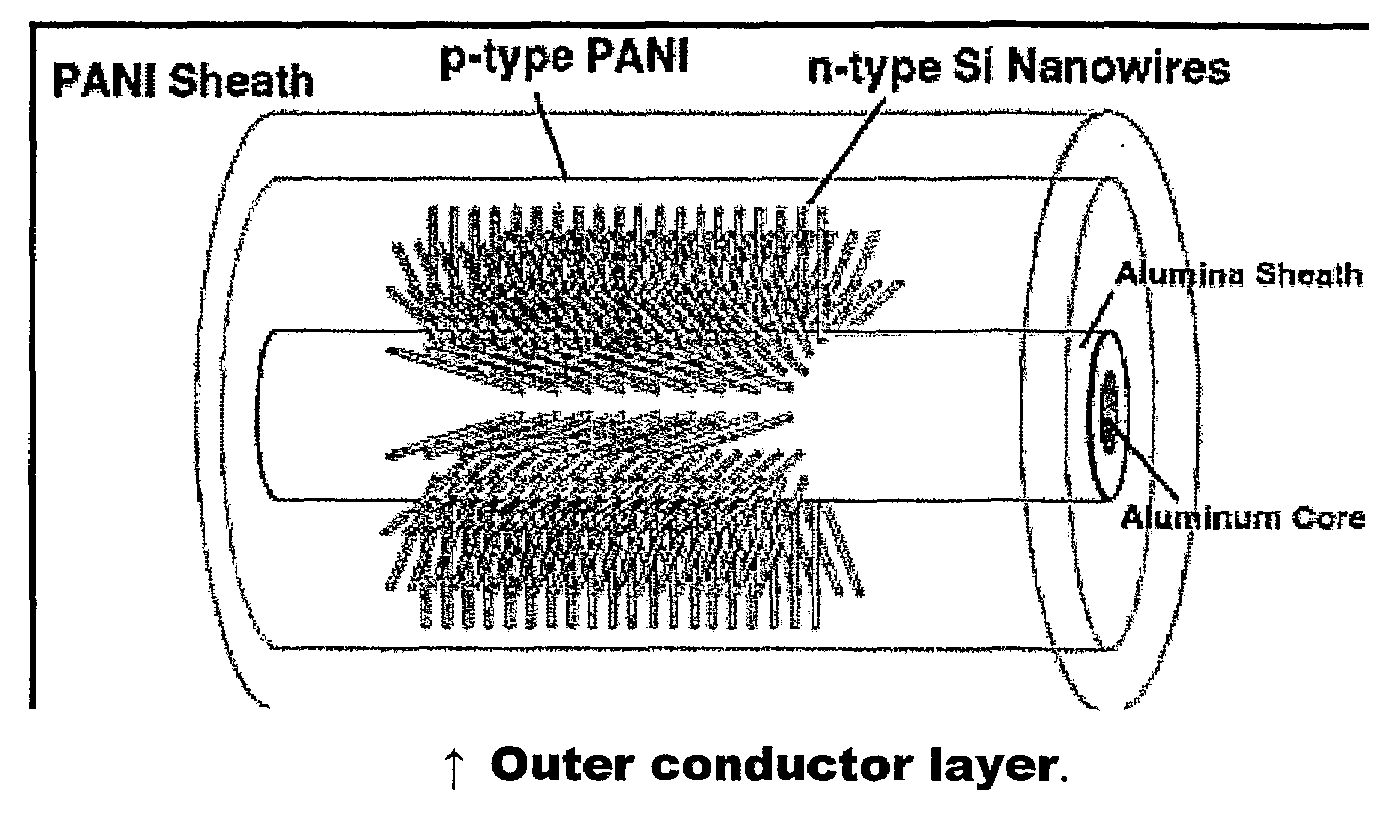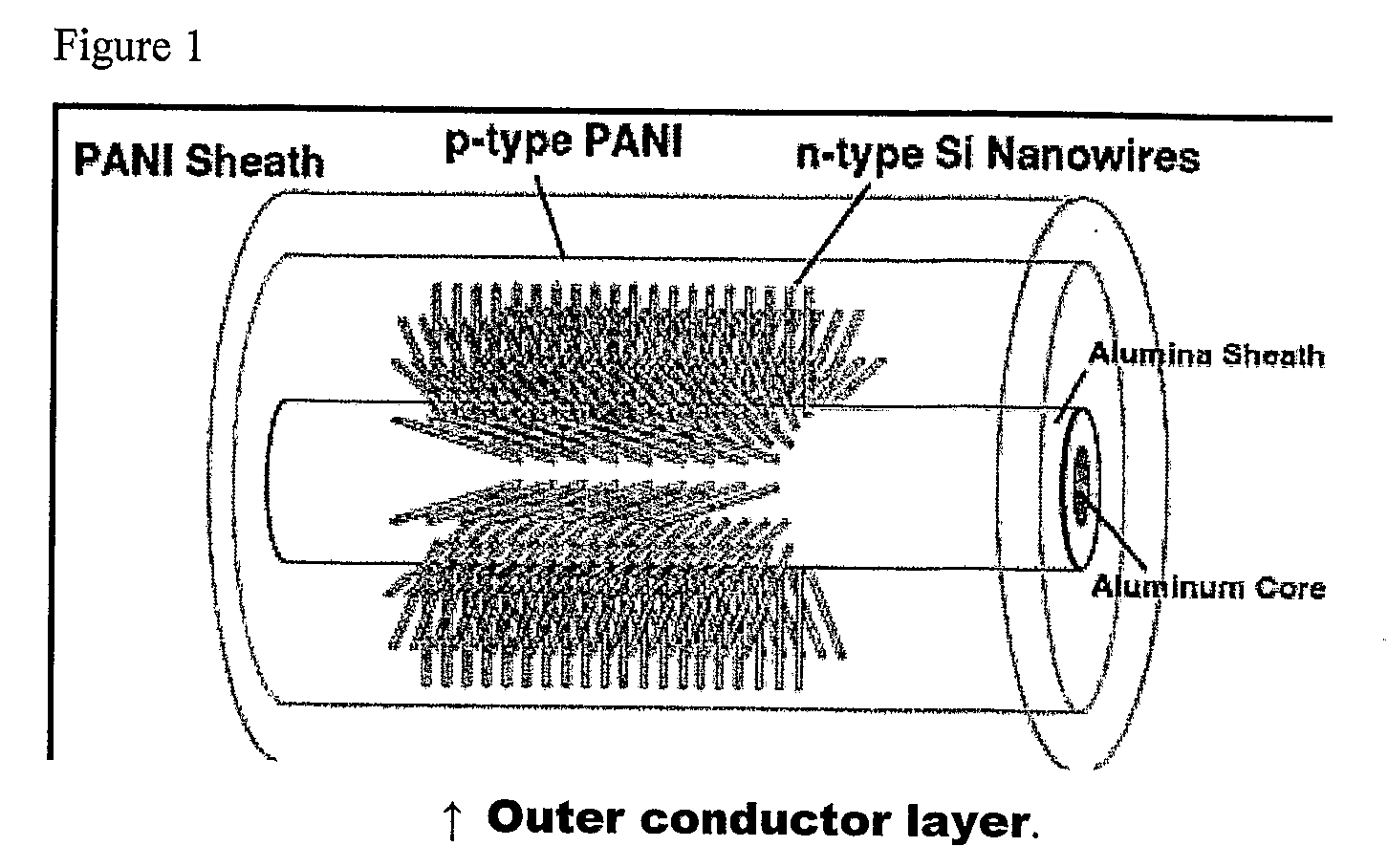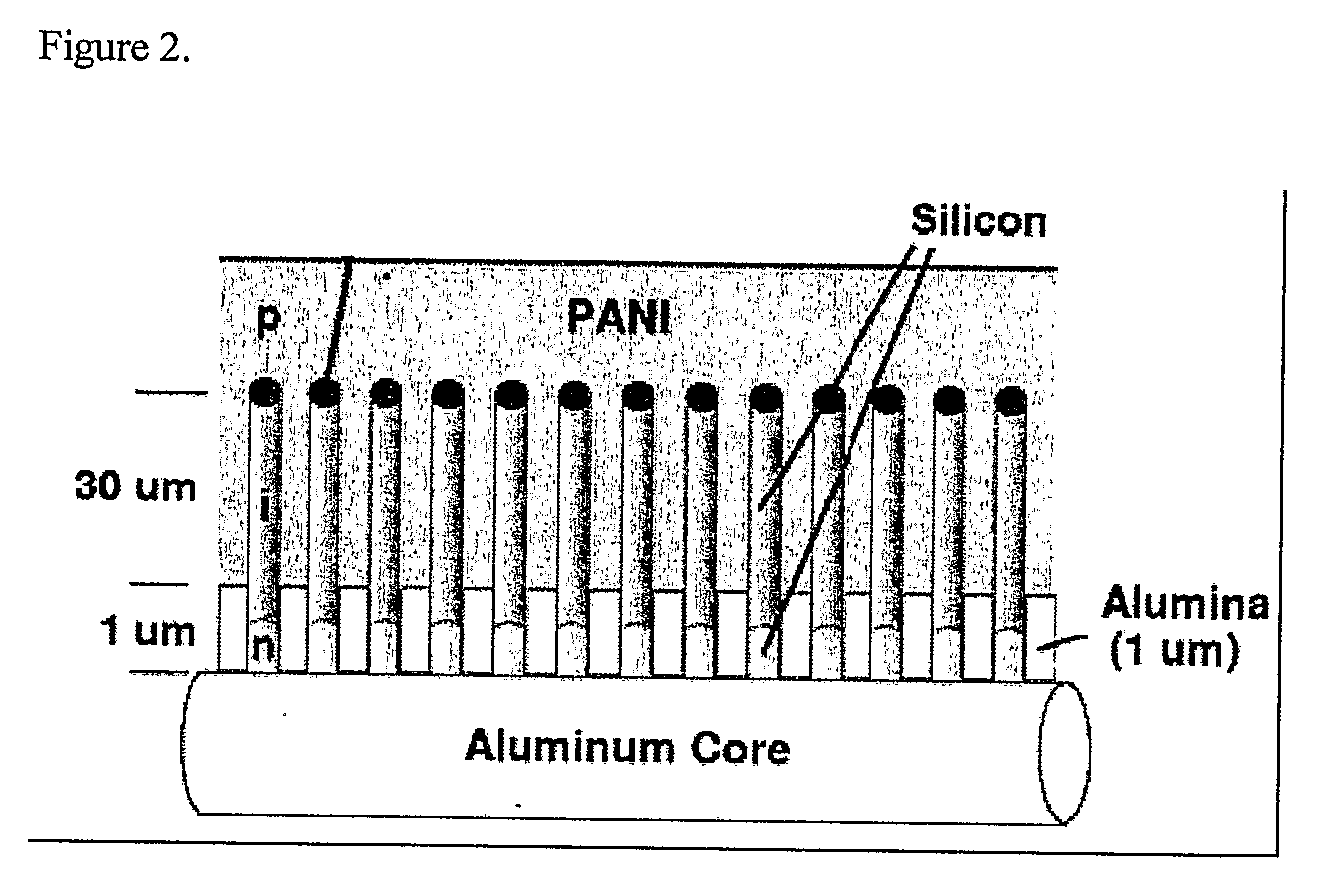Photovoltaic wire
a photovoltaic wire and nano-structure technology, applied in the direction of photovoltaic energy generation, semiconductor devices, solid-state devices, etc., can solve the problems of more problematic charge separation and collection using nano-sized structures, and achieve the effects of improving light absorption, increasing absorption, and enhancing optical absorption of nanowires
- Summary
- Abstract
- Description
- Claims
- Application Information
AI Technical Summary
Benefits of technology
Problems solved by technology
Method used
Image
Examples
Embodiment Construction
[0018]Periphery means the perimeter of a circle or other closed curve, the perimeter of a polygon, the external boundary or surface of a body and the outward bounds of something as distinguished from its internal regions or center.
[0019]Anodize means an electrolytic chemical reaction where a conductor is made the anode in order to coat the conductor with an oxide layer.
[0020]The photovoltaic wire invention presented here is produced by three basic steps: (1) producing a porous metallic oxide template structure on the surface of metallic wire or other substrate (2) inserting a catalytic seed in the oxide pores to initiate silicon nanowire formation of p, i (intrinsic), or n-type silicon nanowires, (3) growing the silicon nanowires out through the oxide pores, and (4) the application of n or p-type coating of polyaniline (PANI) or other similar conducting polymer to encase the silicon nanowire arrays and form a multitude of p-n junctions. In the preferred embodiment, the silicon nanow...
PUM
| Property | Measurement | Unit |
|---|---|---|
| diameters | aaaaa | aaaaa |
| diameters | aaaaa | aaaaa |
| thickness | aaaaa | aaaaa |
Abstract
Description
Claims
Application Information
 Login to View More
Login to View More - R&D
- Intellectual Property
- Life Sciences
- Materials
- Tech Scout
- Unparalleled Data Quality
- Higher Quality Content
- 60% Fewer Hallucinations
Browse by: Latest US Patents, China's latest patents, Technical Efficacy Thesaurus, Application Domain, Technology Topic, Popular Technical Reports.
© 2025 PatSnap. All rights reserved.Legal|Privacy policy|Modern Slavery Act Transparency Statement|Sitemap|About US| Contact US: help@patsnap.com



